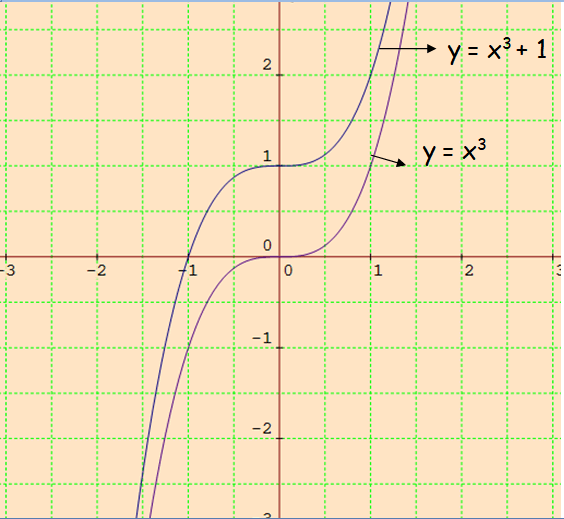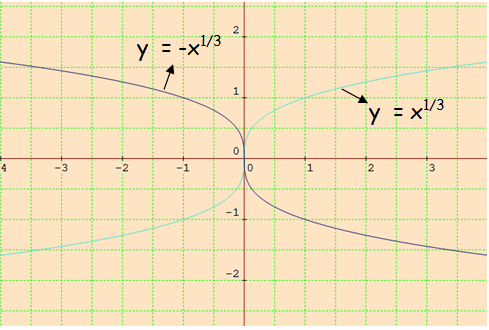REFLECTION TRANSLATION AND DILATION EXAMPLES
Subscribe to our ▶️ YouTube channel 🔴 for the latest videos, updates, and tips.
Reflection :
A reflection is the mirror image of the graph where line l is the mirror of the reflection.

Here f' is the mirror image of f with respect to l. Every point of f has a corresponding image in f'. Some useful reflections of y = f(x) are
(i) The graph y = -f(x) is the reflection of the graph of f about the x-axis.
(ii) The graph y = f(-x) is the reflection of the graph of f about the y-axis.
(iii) The graph of y = f−1(x) is the reflection of the graph of f in y = x.
Translation :
A translation of a graph is a vertical or horizontal shift of the graph that produces congruent graphs.
The graph of
y = f(x + c), c > 0 causes the shift to the left.
y = f(x − c), c > 0 causes the shift to the right.
y = f(x) + d, d > 0 causes the shift to the upward.
y = f(x) − d, d > 0 causes the shift to the downward.
Consider the functions:
(i) f(x) = |x| (ii) f(x) = |x − 1| (iii) f(x) = |x + 1|

Dilation :
Dilation is also a transformation which causes the curve stretches (expands) or compresses (contracts). Multiplying a function by a positive constant vertically stretches or compresses its graph; that is, the graph moves away from x-axis or towards x-axis.
If the positive constant is greater than one, the graph moves away from the x-axis. If the positive constant is less than one, the graph moves towards the x-axis.
Consider the functions:
(i) f(x) = x2 (ii) f(x) = (1/2) x2 (iii) f(x) = 2x2

Solved Examples
Example 1 :
For the curve y = x3 given in the figure shown below, draw
(i) y = −x3
(ii) y = x3 + 1
(iii) y = x3 − 1
(iv) y = (x + 1)3 with the same scale.

Solution :
(i) y = −x3
To find the graph of y = −x3, we have to use the concept reflection.
Let f(x) = x3
f(-x) = (-x)3
f(-x) = -x3
f(-x) = -f(x)
So, the reflection is about x-axis.

(ii) y = x3 + 1
To graph the above function, we have to use the concept translation. That is, move the curve 1 unit upward.

(iii) y = x3 − 1
To graph the above function, we have to use the concept translation. That is, move the curve 1 unit downward.

(iv) y = (x + 1)3
To graph the above function, we have to use the concept translation. That is, move the curve 1 unit left side.

Example 2 :
For the curve y = x1/3 given in the following figure, draw
(i) y = -x1/3
(ii) y = x1/3 + 1
(iii) y = x1/3 - 1
(iv) y = (x + 1)1/3

Solution :
(i) y = -x1/3
Here we have negative sign in front of x1/3
f(x) = x1/3
f(-x) = (-x)1/3
f(-x) = -x1/3
f(-x) = -f(x)
So, the reflection is about x - axis.

(ii) y = x1/3 + 1
Since 1 is added with the given function, we have to move the curve 1 unit upward.

(iii) y = x1/3 - 1
Since 1 is subtracted from the given function, we have to move the curve 1 unit downward.

(iv) y = (x + 1)1/3
Since 1 is added to x in the given function, we have to move the curve 1 unit left side.

Subscribe to our ▶️ YouTube channel 🔴 for the latest videos, updates, and tips.
Kindly mail your feedback to v4formath@gmail.com
We always appreciate your feedback.
About Us | Contact Us | Privacy Policy
©All rights reserved. onlinemath4all.com

Recent Articles
-
10 Hard SAT Math Questions (Part - 41)
Dec 24, 25 07:58 PM
10 Hard SAT Math Questions (Part - 41) -
ASTC Formula in Trigonometry
Dec 23, 25 11:34 PM
ASTC Formula in Trigonometry - Concepts - Examples and Solved Problems -
Coin Tossing Probability
Dec 23, 25 11:29 PM
Coin Tossing Probability - Concept - Sample Space - Formula - Solved Problems

